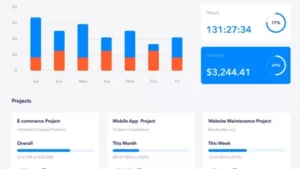DLPA has more than 10 years of experience as a performance management solution provider. When it comes to managing employees, we have long been aware of the challenges surrounding efficiency that many businesses, big and small, are facing. With the added impact of a continuous shift in the nature of work – namely the globalisation of teams and the subsequent increase in remote work – there is a constant need to improve and rethink employee engagement throughout the management process.
Performance management software can play a vital role not only in the prevention of employee attrition but also in the continuous upkeep and improvement of productivity and engagement across a company, which is needed to thrive in an increasingly fast-paced and competitive business world. The right software will equip organisations with the tools needed to asses and optimise their team’s performance in a centralised, time-efficient and streamlined manner, making it easier for HR departments and team leaders to flag areas for improvement, control company output and ultimately boost the business’s bottom line.
The key benefits of implementing quality performance management software are:
1. It improves engagement
Naturally, the most significant gain an organisation will experience from implementing performance management software is improved employee engagement. HR departments, managers and employees alike will benefit from transparency of individual, department and company objectives and performance assessment, improving collaboration, communication and company morale. Being able to visualise performance against targets in real-time provides all parties with a sense of achievement, which is one of the most effective ways to boost motivation and continuous development, and retain top talent.
2. It empowers managers to support remote teams
Globalisation, technological advancements and the establishment of flexibility as a non-negotiable for many top employees sparked an incremental shift towards remote or semi-remote work in recent years. Add a global pandemic to the mix and whole companies have transitioned to working from home practically overnight. Utilising the right performance management software empowers managers to effectively support and monitor remote teams in an organised and streamlined manner. Shifting to remote work can introduce a dangerous “out of sight, out of mind” attitude, which has the potential to negatively impact the productivity and engagement of a workforce. Having the necessary tools neatly under one roof to keep up to speed with distanced employees not only in terms of their output but also their happiness and development within their role, is an invaluable asset to managers, staff, HR departments and to organisations as a whole. No-one gets overlooked, effective communication is retained and the company ends up being better connected than ever.
3. It allows managers to easily identify productivity-related issues and get regular performance updates
Performance management software allows managers to get a pulse on how teams and individuals are performing on a regular basis. For many managers, this will be an unprecedented level of transparency leading to a valuable unveiling of any productivity-related issues. Being able to rely on software to expose areas of weakness and signal where they originated frees up time that would have previously been spent investigating these lapses, while simultaneously ensuring unbiased findings. Regular updates on tasks and general performance not only keeps people on track, but also improves communication and collaboration, which are pillars of a successful workforce.
4. It facilitates regular, more useful performance conversations and feedback
Performance management software isn’t just important for managers to keep tabs on how much work employees are getting done, it also helps to keep all team members connected and supported. This results in a more natural, continuous flow of conversation and feedback throughout the workforce, which can vastly improve collaboration and efficiency. Communicating in real-time while task information is fresh in mind is infinitely more constructive in the long run and greatly reduces productivity-hindering roadblocks. Regular updates and feedback also help to keep employees in the know, improving autonomy and empowering them to evaluate their own progress and achievements over time. When employees are kept informed on how their performance is perceived and valued, they know where they stand in relation to their own career development goals. The benefits that can stem from this step-up in communication are far-reaching but include: minimised employee attrition, enhanced motivation, improved staff retention, accelerated learning and development, less tendency towards micromanagement, better use of time, more efficient workflow, and overall improved business outcomes.
5. It saves time previously consumed by paper-based systems and annual reviews
Many organisations still operate with paper-based performance management systems and annual reviews, which is most often experienced as time-consuming, labour-intensive, error-prone, and frankly, pointless. It is no longer necessary to spend valuable time pouring over mundane paperwork in order to evaluate the performance of an employee. Performance management software not only saves time through the digitisation of the process, but it also increases access to valuable data, which is essential for its reporting capabilities on target-reaching, competency gaps, development needs, engagement, retention, and more. Old fashioned methods are a time and energy burden on HR and managers when the right software can easily consolidate all actions into streamlined milestones, tracking progress, setting auto-reminders and laying the groundwork for more meaningful performance conversations.
6. It develops cohesion between departments and aligns goals to strategy and values
One of the most notable benefits of performance management software is the opportunity to observe a more comprehensive view of progress, not only of individual employees – though this is a major perk – but also of teams, departments and the wider organisation. This works to develop inter-departmental cohesion as employees, managers, HR and executives have a line of sight view of all individual, departmental and company targets, their current status, and their relationship to wider organisational strategy and values. Traditional methods of performance management fail to paint a true depiction of an individual or team, making it difficult to know who the top contributors are and whether employees/teams are on track to reach targets. This means that problem areas go unnoticed and corrective action isn’t taken until it’s too late. Through the use of performance management software, employers have the opportunity to share the bigger picture, including how employee performance impacts initiatives over time, creating a culture of synergy that has the potential to boost morale, engagement, development and overall performance.


